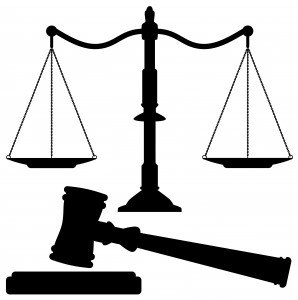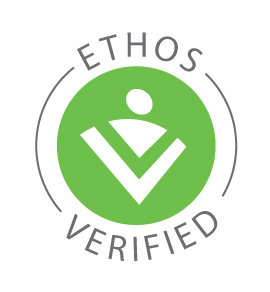On-page SEO refers to the process of optimizing specific sections of your site content to make it more clear for users and search engines. The goal is to have any given page of your site — from top to bottom — be aligned with a certain topic. And as someone who is in charge of optimizing your company’s site, it is your responsibility that all of your site components meet both a user’s and search engine’s demands.
That’s … a lot of responsibility. How the heck does a marketer get started and actually do all of that? Well, we created a handy dandy Excel template to walk you through the entire process.
Our SEO Template will guide you through the process of optimizing your website’s on-page SEO — that includes “doing” SEO, but also formulizing a plan, making it easier to coordinate pages and keywords, and tracking changes and results all in one place. The components of the template allow you to plan your SEO in advance, and to either implement everything step-by-step, or pass the whole thing off to someone else to easily execute.
Sounds pretty awesome, right? Well, this blog post is going to make it even more awesome, because it’s going to walk you through how to use that template. Consider this your owner’s manual! So let’s get started… download the free Excel SEO template here to follow along and learn how to use it to improve your site’s SEO.
How to Use Your On-Page SEO Template
(Note: www.ilovemesomegreens.com is being used as an example throughout this post. It’s serving as an arbitrary example that serves to make the implementation easier for you — you can imagine your own website in these examples if that makes the process clearer!)
Step 1: Crawl Your Site
Start by getting an overview of all of your content by downloading all indexed pages of your website. A free tool like Xenu’s link crawler can give you an export of all of your pages, which can serve as an audit of your site that delivers all the pages you’ll need to optimize.

The output will include some data that you do not need. You will, however, want to keep 3 of these columns: The address (which is the URL), the title (which is the page title of your pages) and the description (which is the page description). Delete all the other information to make the Excel sheet more user-friendly. Then copy and paste over the address, title and description into the template. The address should be pasted into column B, the title into column C, and the description into column E.
Step 2: Define Site Architecture
Now that you have a basic index of your site pasted into the template, you’ll want to start to organize and prioritize your content. You can start by defining where within your site architecture pages currently sit. Note whether a page is your home page (ideally you’ll only have one of those), or an internal page — and if so, what kind of internal page.

Step 3: Update URLs, Page Titles, and Descriptions
Review your current URLs, Page Titles and Descriptions to see if they need updating. This is part of the point of using a template like this, so you get a larger overview of the type of content you have on your website.

Notice how column D and column F automatically calculate the length of each element. The recommended length for page titles is 70 characters. Actually, a quick and easy optimization project is to update all page titles that are longer than 70 characters or repetitively use keywords.
The recommended length for page descriptions is 150 characters. Make sure you’re not too repetitive with keywords in this space. Ideally, this is a sentence that you would use to describe that page to a person in conversation, too.
(Note: For some sites you may have to also update the URLs, but that is not always the case and thus was not included as part of this optimization template.)
Step 4: Establish a Value Proposition
A very important next step, but often overlooked, is establishing a value proposition. In column G, define what the purpose of a page — and ultimately, your website — is. The page itself should have a goal aside from just ranking for a particular term.
 Step 5: Define Your Target Audience
Step 5: Define Your Target Audience
In column H, you have the chance to define who you are targeting. In other words, who is your target audience? Is it one, or multiple, buyer personas? Everything you’re doing while you write and optimize your content is for this person or group of people. Remember, you are optimizing for humans, not just robots.

Step 6: Plan Page Titles
Using the template, you can note/plan what you want your new page title to be for a particular page. Best practice for page titles is something like “Keyword Phrase | Context.” The goal of the page title is to lay out the purpose of the page without being redundant or over-optimizing this space.

Step 7: Add Your Page Description
Your page description should be a short, declarative sentence that incorporates your keyword, as you laid it out in your page title, in some form. It should not have content verbatim as it appears on the page itself.

Step 8: Track Keywords and Topics for Each Page
Keywords are important, so you will want to note and track clear topics/keywords for each of your pages. Think of your target keyword as the designated topic for a particular page. Define just one topic per page — this allows you to go more in-depth and provide really detailed information. This also means that you are only optimizing for one keyword per page.
There are, of course, a few exceptions to this rule. Your home page is a classic example — the goal of your home page is to explain what your entire website is about, and thus you’ll need a few keywords to do that. Another exception is overview pages like services and product pages, which outline what all of your products and services may be.

Step 9: Review and Edit Page Content as Needed
Good content needs to be thorough, clear, and provide solutions. So be compelling! Write for your target audience. Write about how you can help them. Compelling content is also error free, so check your spelling and grammar. Aim to have at least 500 words per page, and format content to make it easier to read and digest with the use of headers and subheaders. Columns O-Q can be used for you to keep track of changes that you’ve made or note which changes need to be implemented.

Step 10: Incorporate Visual Content
Content can be more than just text. Think about what kind of visual content you can incorporate into a page (if it adds value and serves a purpose, of course). Columns R-U allow you to note what media elements need to be added. The more engaging you can make your content, the more likely people are to stay on your page longer, and share and talk about your content.

Step 11: Link It Up
Incorporating links throughout content is a must, but something that’s easily overlooked. Consider this to be part of polishing your content. Use columns V-X to plan for these elements if you don’t already have them… or to at least spruce them up.

Be sure to include the latest sharing networks like Pinterest and Google+, too. While not that new, both have proven to be highly valuable in search and can improve overall click through rates on your search results.
You may have noticed that we recommend you make anchor text less keyword-centric (don’t use an exact match). This is an important change that has evolved with recent Google Algorithm updates, so make sure that your anchor text include more than just your keywords. Simply incorporate relevant text surrounding that keyword as part of that anchor text, and you should be all set.
Step 12: Optimize for Conversions
SEO has no point if you’re not optimizing your site to increase the amount of leads, subscribers, or fans. Columns Y-AG allow you to plan for conversions. Every page of your website is a conversion opportunity. That means every page of your website should include at least 1 call-to-action, though many pages may have multiple calls-to-action. When possible, include a CTA at each stage of the buying funnel — top of the funnel, middle of the funnel, and bottom of the funnel. As you add, edit, or update CTAs, be sure to also note conversion rate changes.

Once you finalize your SEO plans, implement these changes on your website or pass them along to someone to implement for you. This will take time to complete, so aim to work on 5-10 pages a week. The template ultimately is something that you can use whether you are doing SEO for the first time, or the tenthousandth. It keeps everything in one place and lets you track all of your changes, too, which is important because SEO is not a once and done deal.
Source: Hubspot
Download Free Excel Spreadsheet Guide Here
 We’ve long been talking about the importance of businesses keeping their own records of the content from their social media profiles. Just last week there was another Facebook outage which serves to remind us all that this information is not evergreen if solely held by third-parties.
We’ve long been talking about the importance of businesses keeping their own records of the content from their social media profiles. Just last week there was another Facebook outage which serves to remind us all that this information is not evergreen if solely held by third-parties.




 Step 5: Define Your Target Audience
Step 5: Define Your Target Audience









